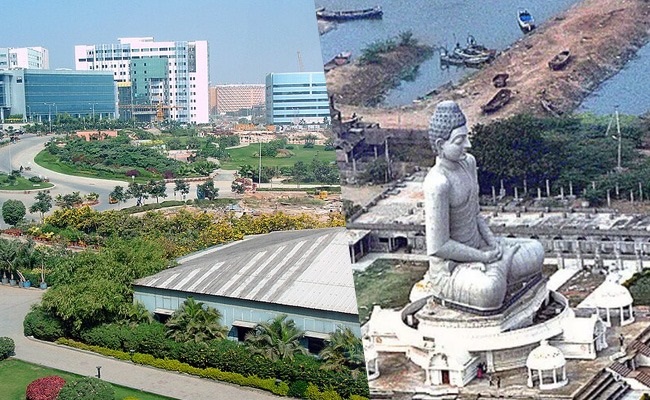
Cities are not built in just a few days; they develop over decades and centuries. Hyderabad, Chennai, Bengaluru, Mumbai, and Delhi have all been capital cities that have evolved over long periods.
Historically, proximity to the sea coast played a significant role in the development of cities, whether it was Mumbai or Chennai, among other factors.
Despite the hot, humid, and sweaty climate in these cities, the advantages of being near the coast outweighed these limitations, allowing them to eventually become cities of opportunity.
The situation is different for Bengaluru and Hyderabad. Despite their centuries-old histories, Hyderabad, a landlocked city, has become a popular destination for many migrants due to its favorable climate.
People from Coastal Andhra, who experience Hyderabad's hot but dry summers and cool winters, often fall in love with the city. This climate factor has contributed to the city's expansion, with many people migrating there over the decades.
Bengaluru also benefits from a climate that is neither too hot in summer nor too cold in winter, maintaining a moderate temperature year-round. This has also made Bengaluru attractive to many migrants.
As for Amaravati, the new capital city of Andhra Pradesh, it lacks the appealing factors that make people fall in love with a place.
Unlike Hyderabad decades ago, it is not yet a land of opportunities, nor is it known for its pleasant weather. Summers in Amaravati are extremely hot and uncomfortable.
The city has three seasons: summer, severe summer, and most severe summer. Although there is significant rainfall in some months, it often comes with oppressive humidity.
Given these challenging conditions, the only way to make Amaravati desirable is by building infrastructure that meets international standards.
For example, Dubai, despite its harsh weather conditions—little rain and summer temperatures reaching up to 50 degrees Celsius—has become a favorite destination for people worldwide due to its top-notch infrastructure and fully air-conditioned lifestyle.
Even small grocery stores in Dubai are equipped with air conditioning. Except for those who work in labor or field jobs, most people in the UAE enjoy a comfortable, air-conditioned life. Amaravati needs similar infrastructure to become desirable.
Can this be achieved during Chandrababu's tenure?
It is not easy to attract industries and multinational corporations (MNCs) to set up shop. Even for people to want to work in a place like Amaravati, the city needs to have some appeal.
The area should serve as a magnet, boasting world-class infrastructure, from wide roads and diverse malls to large air-conditioned convention halls.
Without this level of infrastructure, even MNCs will be hesitant to invest in the area, and promises may remain just as Memorandums of Understanding (MOUs) without immediate realization.
We must wait to see what measures will be taken to attract global attention to Amaravati. TDP-allied media has branded Chandrababu as an expert in city building.
If he can successfully develop Amaravati amidst these challenges, he surely deserves a place in history.











